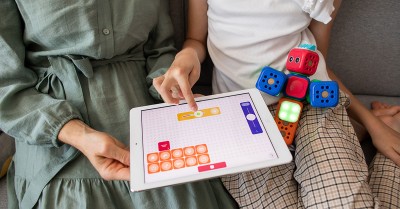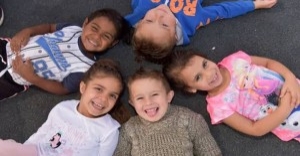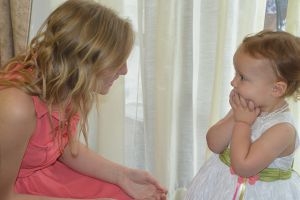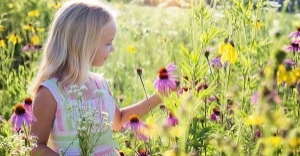Young children today are growing up in digital contexts which range from devices like computers, tablets, smart televisions and smart watches to the internet and apps for recreation, learning and connection. iPads are among those devices which not only make for fun learning experiences but complement intentional learning in important ways. The following provides the benefits and experience ideas on using Ipads for children.
- iPad has many apps that support reading for children. Some of these apps feature adaptations of popular children’s stories as interactive narratives complete with attractive animation and sound effects. This type of digital technology can provide children with an immersive experience that brings all the appeal of visual, written as well as auditory texts.
- Additionally, interactive tools in these iPad apps sound out words along with highlighting corresponding letters. All this not only helps children to develop active listening skills but by associating words and meanings, supports in expanding their vocabulary as well.
- Interactive books that can be read on the iPad also give children more agency in deciding on whether they want to do on their own or in groups. There may be times when they are tired, sleepy or fretful when reading on their own can be more satisfying than with a teacher or with peers. And this also has the advantage of offering support to educators and staff as children who can attend to other children or address other teaching matters.
iPad also has apps that help children develop critical thinking and problem-solving abilities through puzzles, word games or number games. There are others that can be used to create open-ended imaginative experiences. For example, music production wherein children compose, record, mix sounds and tracks and experiment with different sounds or shoot, edit and make their own videos using relevant apps. Children can also try their hand at drawing, painting and creating digital designs using apps. - The iPad can be used to facilitate group work as well. Digital technology need not always lead to isolated activities. Make opportunities for children to use iPad as a resource in group projects like composting or divide them into small teams to play interactive games. Eventually facilitate the translation of such digital experiences like viewing a cartoon film to non-digital activities through painting, crafts and music. Such give and take of digital and non-digital experiences help build further opportunities for language development, and social and emotional learning.
- The iPad can also be used to support children with additional needs. It has apps with special features and design interfaces that can benefit children with visual impairment, autism, dyslexia and anxiety.
- However, educators should see that digital devices like iPads are used alongside face-to-face learning and don’t replace or even edge past it. Also, the apps used by children should have slow transitions and minimal advertising.
Finally no matter how useful a device or its apps, they should not spend more than recommended hours. In its Statement on young children and digital technologies, Early Childhood Australia recommends that children aged two years and under should mostly use screen technologies for video-chatting while for children aged two to five years, a limit of one hour of sedentary screen time per day is suggested.
References:
Belonging Early Years Journal, Digitial Technologies
Digital Policy Statement, Early Childhood Australia







 Open ended questions cannot be responded to with one word answers such as yes or no. These types of questions enables a child to provide
Open ended questions cannot be responded to with one word answers such as yes or no. These types of questions enables a child to provide During your child’s preschool years, an important milestone begins to emerge. This is the development of pre-writing skills. Pre-writing skills are used to encourage, develop
During your child’s preschool years, an important milestone begins to emerge. This is the development of pre-writing skills. Pre-writing skills are used to encourage, develop Open ended materials enables children to play freely. They are objects that have no rules to follow, use or function. Raw materials that can be
Open ended materials enables children to play freely. They are objects that have no rules to follow, use or function. Raw materials that can be An Acknowledgment of the Country is a way of showing respect for the Traditional Owners and can be given by both non-Indigenous people and Aboriginal
An Acknowledgment of the Country is a way of showing respect for the Traditional Owners and can be given by both non-Indigenous people and Aboriginal Language plays an important role in a child’s development. It enables a child to communicate effectively with their family, learn at school, socialize with friends,
Language plays an important role in a child’s development. It enables a child to communicate effectively with their family, learn at school, socialize with friends, Like adults, children have to deal with their own stress in life. Moving house, starting a new school, preparing for a new sibling - these are
Like adults, children have to deal with their own stress in life. Moving house, starting a new school, preparing for a new sibling - these are Playdough is such a versatile material. It provides numerous benefits to children as they manipulate it, it is safe and soothing and provides children with
Playdough is such a versatile material. It provides numerous benefits to children as they manipulate it, it is safe and soothing and provides children with Teaching children about sustainability enables them to appreciate and respect the natural environment. Early childhood services can provide meaningful hand on learning experiences in order
Teaching children about sustainability enables them to appreciate and respect the natural environment. Early childhood services can provide meaningful hand on learning experiences in order Recycling is an important concept that teaches children to care for the environment. It encourages children to be responsible and show a growing appreciating for
Recycling is an important concept that teaches children to care for the environment. It encourages children to be responsible and show a growing appreciating for When children apply paint to paper, glue things together, or pound a lump of clay, they experiment with colour, shape design and texture.
When children apply paint to paper, glue things together, or pound a lump of clay, they experiment with colour, shape design and texture.



